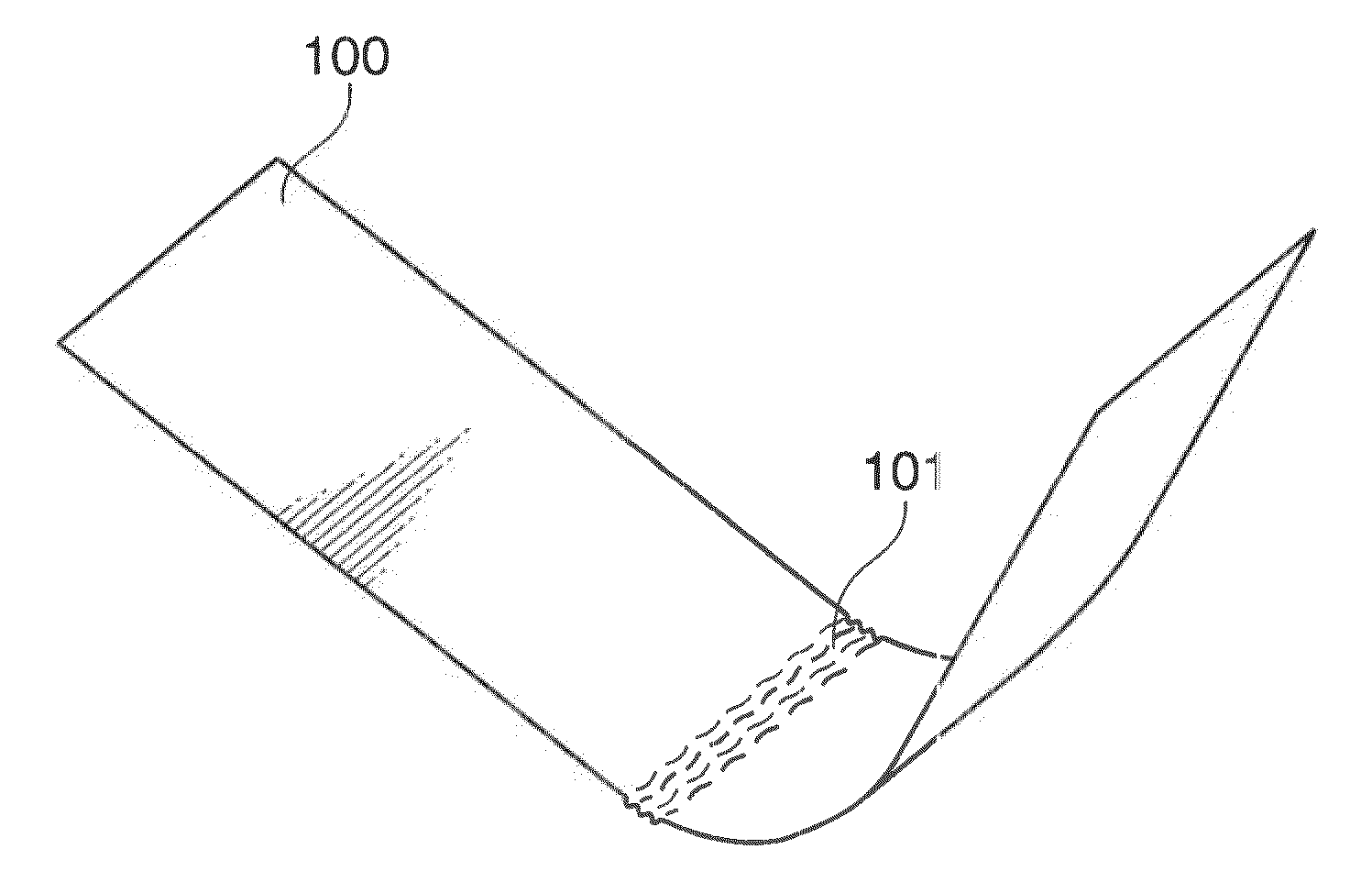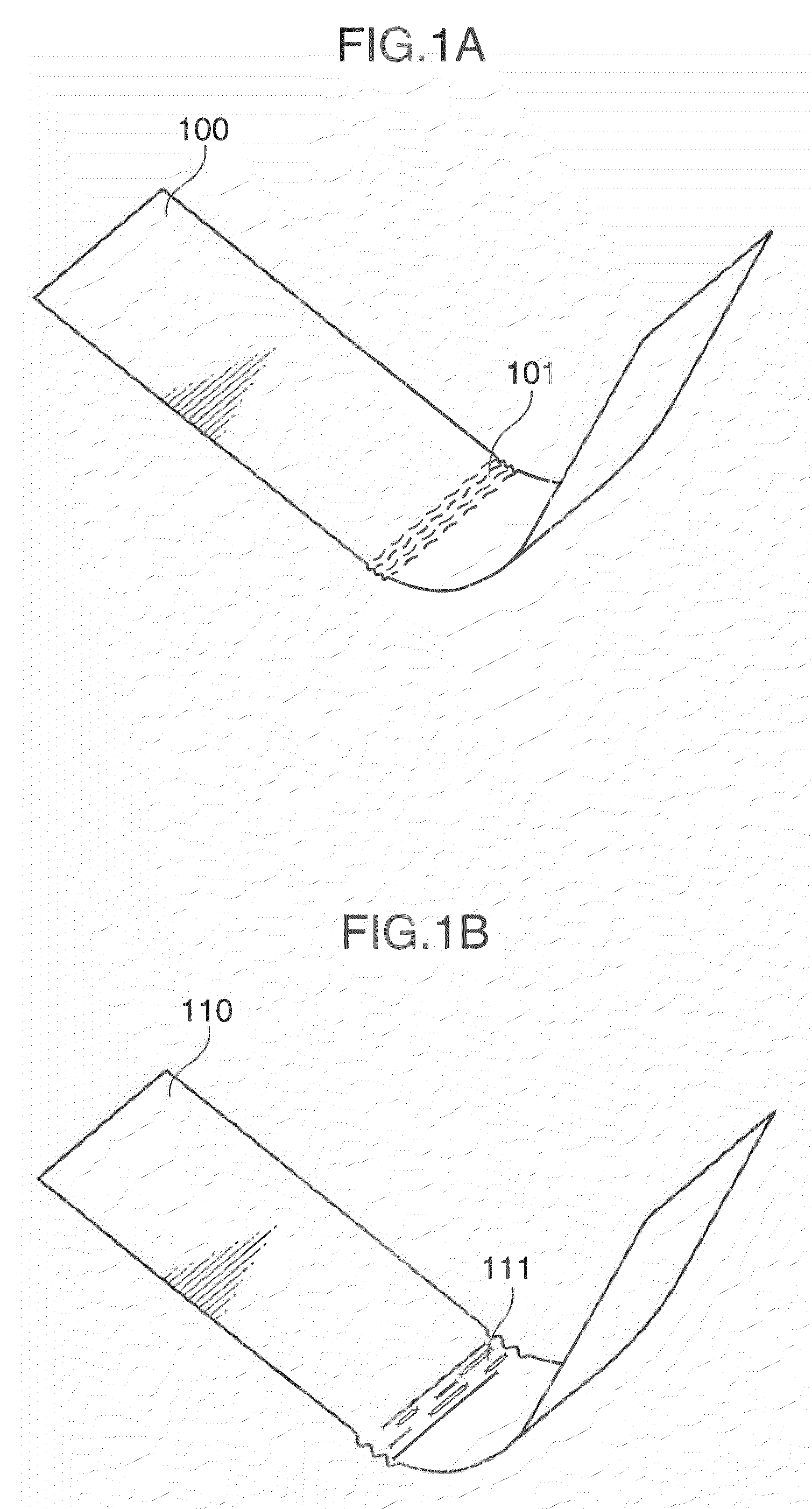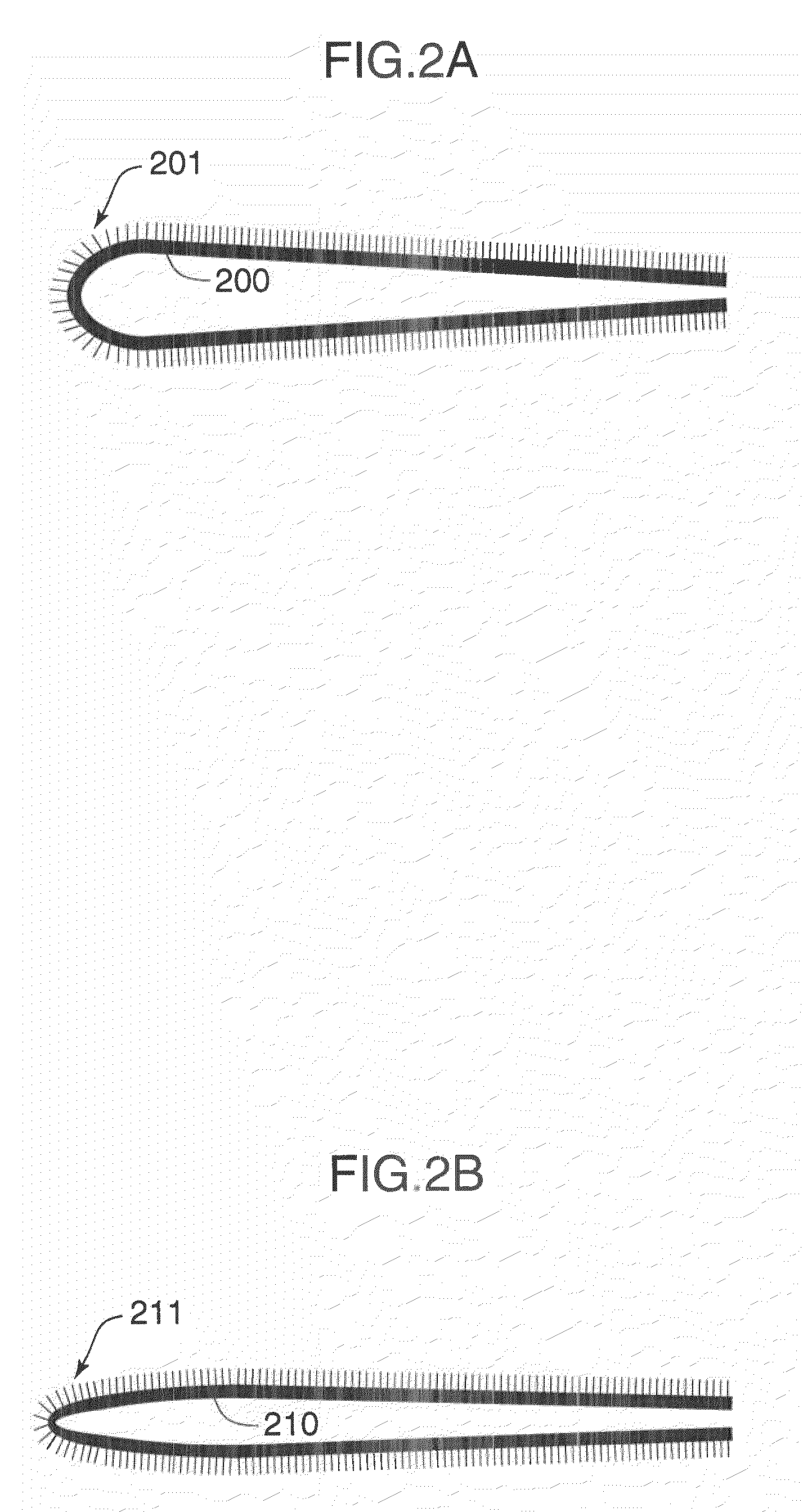Split leather product and manufacturing method therefor
a technology of split leather and manufacturing method, which is applied in the direction of synthetic resin layered products, furniture parts, roughening, etc., can solve the problems of split leather having poor appearance characteristics, split leather being expensive, and split leather products obtained in accordance with the above method, and achieves the effect of increasing physical strength
- Summary
- Abstract
- Description
- Claims
- Application Information
AI Technical Summary
Benefits of technology
Problems solved by technology
Method used
Image
Examples
example 1
[0153]Sea-island type mix-spun fibers comprising polyethylene terephthalate (PET) resin (island component) and polyethylene (sea component) in a weight ratio of 50 / 50 were melt-spun. The obtained fibers were drawn, crimped and cut to yield staples having a fineness of 4 dtex and a cut length of 51 mm.
[0154]The obtained staples were carded to manufacture webs that were then stacked to a predetermined number of plies by way of a cross lapper. An entangled nonwoven fabric comprising sea-island type fibers was obtained next through needle-punching of the overlaid webs using a felting needle.
[0155]The obtained entangled nonwoven fabric was then shrunk in warm water and was dried, after which it was hot-pressed to yield a surface-smoothed entangled nonwoven fabric having a thickness of 2.2 mm and a basis weight of 500 g / m2. A polycarbonate-polyurethane DMF solution (solids 13%) was impregnated into the surface-smoothed entangled nonwoven fabric. The entangled nonwoven fabric impregnated w...
example 2
[0161]A split leather product was obtained in the same way as in Example 1, but using herein a skin layer having a thickness of about 0.2 mm, obtained through thinner slicing, in place of the skin layer about 0.5 mm thick. The obtained split leather product had a thickness of 1.29 mm, the split leather had a thickness of 1.02 mm, the skin layer had a thickness of 0.2 mm (including 0.08 mm of adhesive layer), and the resin layer had a thickness of 0.07 mm. The obtained split leather product was evaluated in accordance with the above-described evaluation methods. The results are given in Table 1.
example 3
[0162]A split leather product was obtained in the same way as in Example 1, but using herein a polycarbonate-polyurethane nonwoven fabric dyed beforehand, instead of by coloring the surface of the bonded polycarbonate-polyurethane made into a film, by gravure coating. The obtained split leather product had a thickness of 1.63 mm, the split leather had a thickness of 1.02 mm, the skin layer had a thickness of 0.58 mm and the resin layer had a thickness of 0.03 mm. The obtained split leather product was evaluated in accordance with the above-described evaluation methods. The results are given in Table 1.
PUM
| Property | Measurement | Unit |
|---|---|---|
| thickness | aaaaa | aaaaa |
| thickness | aaaaa | aaaaa |
| thickness | aaaaa | aaaaa |
Abstract
Description
Claims
Application Information
 Login to View More
Login to View More - R&D
- Intellectual Property
- Life Sciences
- Materials
- Tech Scout
- Unparalleled Data Quality
- Higher Quality Content
- 60% Fewer Hallucinations
Browse by: Latest US Patents, China's latest patents, Technical Efficacy Thesaurus, Application Domain, Technology Topic, Popular Technical Reports.
© 2025 PatSnap. All rights reserved.Legal|Privacy policy|Modern Slavery Act Transparency Statement|Sitemap|About US| Contact US: help@patsnap.com



